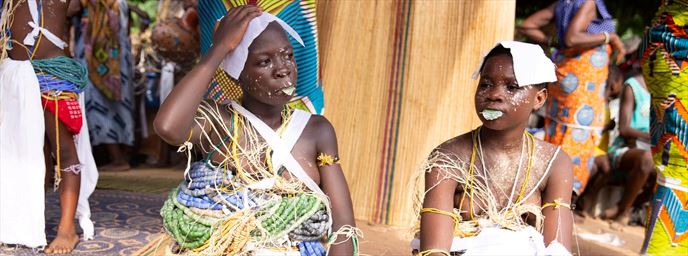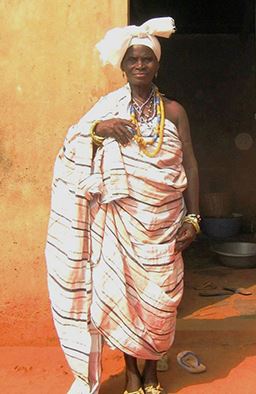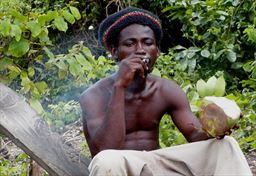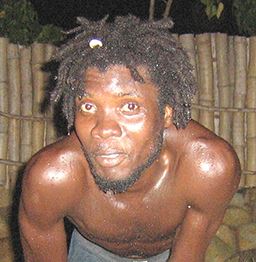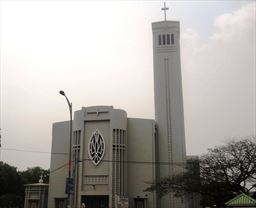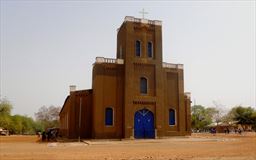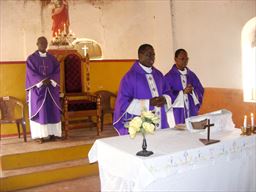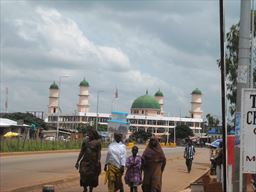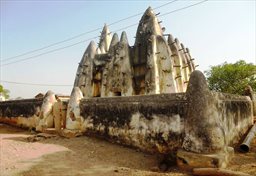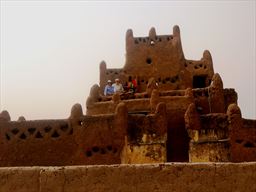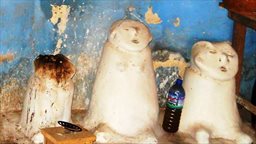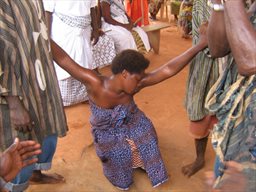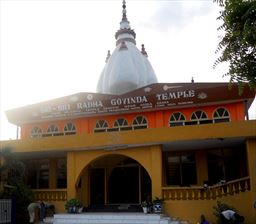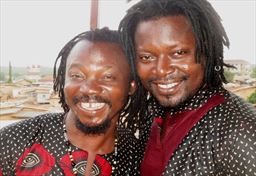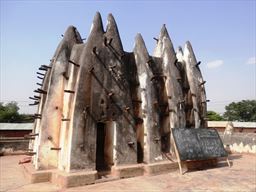Tribes, Rastas & Religions
Tribes, Rastas & Religions
Ghana is a place with a multitude of tribes, religions, languages, and customs all coexisting peacefully. Let us give you some basic information on some of the people you will meet in Ghana
Ashanti
The Ashanti are an Akan people and their tribe is the largest in Ghana. They are one of the few matrilineal societies in West Africa. Twi is the language of the Ashanti people and one of the most widely spoken languages in Ghana. It is a Ghanaian Akan dialect similar to Fante.
Prior to European colonization, the Ashanti people developed a large and influential empire in West Africa. They were a powerful, military, and highly disciplined people of West Africa.The Ashanti later developed the powerful Ashanti Confederacy or Asanteman and became the dominant presence in the region.
Ewe
The Ewe people occupy southeastern Ghana and parts of neighboring Togo and Benin. The Ewe are essentially a patrilineal people, the founder of a community became the chief and was usually succeeded by his paternal relatives. Ewe religion is organized around a creator deity, Mawu, and over 600 other deities. Many village celebrations and ceremonies take place in honor of one or more deities.
Coastal Ewe tribes depend on the fishing trade, while inland Ewe are usually farmers and keep livestock. The local variations in economic activities have led to craft specialization. The Ewe also weave Kente cloth, often in geometrical patterns and symbolic designs that have been handed down through the ages. It is their claim that they are the original Kente weavers, and that the more well-known Ashanti Kente industry was established by kidnapped Ewe weavers long ago.
Fante
The Mfantsefo or Fante are an Akan people. This ethnic group is mainly gathered in the south-western coastal region of Ghana. The coastal Akan (Fanti) were the first to have relations with Europeans during the "Scramble for Africa". As a result of long association, these groups absorbed aspects of British culture and language. For example, it became customary among these peoples to accept British surnames
When the Portuguese arrived in the 15th century, the Fante prevented them from venturing inland and leased properties for Portuguese trading missions. But when the Portuguese objected to Fante rules and regulations the Fante expelled them. Thenceforth the Dutch arrived followed by the English. The Fante served as middlemen in the commerce between the interior and British and Dutch traders on the coast.
Major cities of the Fanti's are Cape Coast and Elmina.
Ga
The Ga-Adangbe are about 2 million, making about 8% of Ghana's population. They mostly live in the southeastern coastal region of the Greater Accra region in Accra, Tema, La, Ningo, Kpone, Prampram, and Ada. The Ga's are mostly mixed religious people of Christians, Muslims, and traditionalists.
The Ga people celebrate the massive Homowo festival, literally meaning "mocking hunger". This festival celebrates the passing of a great famine hundreds of years ago. Another popular Ga festival is Asafotu, an annual warrior's festival celebrated by the people of Ada.
Ga people are known for elaborate funeral celebrations where special coffins are crafted depicting the occupation or symbol of one's standing in community. For example, a taxi cab driver is buried with coffin in the shape of a car. These coffin workshops may be visited in the community of Teshie, near La Beach.
Dagomba
The Dagomba people are a large group that populate the northern regions of Ghana and Burkina Faso. They are Muslim and traditionalists with the most common local languages being Dagbani and Hausa. In Dagomba villages, the chief's house is usually a dome-shaped hut located in the center of the village or above the others. Drummers play an important role as both musician and court historians.
The overlord of the Dagbon traditional kingdom is known as the Ya Naa, literally meaning the King of Absolute Power. The court of the Ya Naa is Yendi where his cow skin throne is located. His court can usually be seen on Monday and Friday mornings in Yendi.
Dagomba villages honor their ancestors with a festival called Bugun, which means "fire" or "hell". The celebration begins with a great feast and culminates when the people gather together with lighted torches where they remember their ancestors and throw their torches.
Rastas
The Rastafari movement is a movement that arose in Jamaica in the 1930s. Its adherents worship Haile Selassie I, Emperor of Ethiopia (1930–1974), as God incarnate, the Second Advent, or the reincarnation of Jesus. According to beliefs, Haile Selassie was the 225th in an unbroken line of Ethiopian monarchs of the Solomonic Dynasty. This dynasty is said to have been founded in the 10th century BC by Menelik I, the son of the Biblical King Solomon and Makeda, the Queen of Sheba, who had visited Solomon in Israel.
The Rastafari movement encompasses themes such as the spiritual use of cannabis and the rejection of western society, called 'Babylon'. It proclaims Africa, also known as 'Zion' as the original birthplace of mankind. Another theme is Royalty, with Rastas seeing themselves as African royalty and using honorifics such as Prince or King in order to give royalty to their names.
Many Rastas say that it is not a "religion" at all, but a "Way of Life". However, Rastafari are generally monotheists, worshipping a singular God whom they call Jah. Rastas see Jah as being in the form of the Holy Trinity, that is, Father, Son and the Holy Spirit. Rastas say that Jah, in the form of the Holy Spirit, lives within the human.
Afrocentrism is another central facet of the Rastafari culture. They teach that Africa, in particular Ethiopia, is where Zion, or paradise, shall be created. As such, Rastafari orients itself around African culture. Rastafari holds that evil society, or "Babylon", has always been white-dominated, and has committed such acts of aggression against the African people as the Atlantic slave trade. Despite this Afrocentrism and focus on people of the black race, members of other races, including whites, are found and accepted by Blacks among the movement, for they believe Rasta is for all people.
There are Rasta communities all around the world. In Ghana, particularly in the coast, there are many Rastafari places of worship. The Rasta community around Kokrobite is well known throughout Ghana. Many Rasta music festivals occur and Rasta objects are sold.
Religions of Ghana
There are many religions co-existing peacefully in Ghana and religious tolerance in Ghana is very high. The three most prominent religions are Christian, Islam, and Traditional. While you are invited to attend any type of service, proper attire and respect are required and no proselytizing is permitted.
Christian
Ghana has the highest percentage of Christians in West Africa. About 60% of the citizens of Ghana are Christian, with the majority living in the southern part of the country. There are beautiful Catholic churches in larger cities in Ghana, including Navrongo in the Upper East region. There are many other impressive structures as well, such as the Our Lady of Lourdes Catholic grotto at Kpando, which has an 8-metre statue of Mary, a grotto and life-size statues of the 14 Stations of the Cross. The feast of Assumption (15 August) and Immaculate Conception (08 December) are well attended by pilgrims to this location.
Of course other Christian denominations are present in Ghana too, especially Evangelical Presbyterians, Presbyterians, Methodists, The Seventh-day Adventist Church, and The Church of Jesus Christ of Latter-day Saints. In fact, Ghana is home to one of only three LDS temples on the entire African continent. You will be asked by many people you meet to attend their church and you would be warmly received.
Islam
About 20% of the citizens of Ghana are Muslim. The northern part of the country is heavily Muslim, but you will see mosques and hear calls to prayer throughout Ghana, including throughout Accra. There are three primary branches of Islam within Ghana: Ahlussuna, Tijanis, and Ahmadis. A small number of Muslims are Shi'a. Zetahil is a religion that is unique to Ghana which combines elements of both Islam and Christianity. There are many beautiful mosques in Ghana, some being nearly 1000 years old. Those of practicing faith would be welcome to participate in prayers. Visiting of some mosques is permitted with permission of the Imam. Both Eid-al-Fitr (End of Ramadan) and Eid-al-Adha (Feast of the Sacrifice) are celebrated as national holidays in Ghana.
Traditional
While mostly thought of as being associated with Benin and Togo, about 20% of the citizens of Ghana practice traditional religions, usually in the southeast of Ghana. Despite Christianity and Islam religions being majorly followed within Ghana, traditional beliefs still play a strong role in the Ghana because of their intimate relation to family and local mores. Traditional religions were actively suppressed during colonial times, so there is often a mingling of traditional and Christian beliefs.
Traditional beliefs recognize there is a higher God. The higher God is not directly worshipped as it is usually remote from daily religious life. More important are the lesser Gods, believed to be within the nature that surrounds us like streams, rivers, trees, thunder and mountains. Ancestors are also recognized as part of the spiritual order.
Rituals are important in traditional religion and their purpose is to make contact with a spirit to obtain help in the form of more abundant food, higher standard of living, and improved health. Human and spirit depend upon each other. Humans provide food and other materials, while the spirits provide health, protection from evil spirits and good fortune. Rituals are held to celebrate lucky events, escape bad fortune, celebrate a special day associated with a spirit, for healing, at birth, marriage, death and anniversary of death.
An altar will be elaborately decorated with candles, pictures, and symbolic items related to the spirit. Rituals may consist of some of these elements:
- a feast before the main ceremony
- creation of a pattern of flour or cornmeal on the floor
- Use of drums, rattle bells and gong which have been cleansed and purified
- chanting
- offerings of perfumes, baby powder and libations which the spirits enjoy
- dancing, which builds intensity until one or more dancers become possessed
- animal sacrifice which may be a goat, sheep, chicken, or dog. They are humanely killed by slitting their throat; blood is collected in a vessel. The hunger of the spirit is then believed to be satisfied. The animal is then cooked and eaten. Such animal sacrifice is a method of consecrating food for consumption by followers of traditional religions.
Judaism
There is one Jewish synagogue in Ghana, located in Sefwi Wiawso, a village in the Western Region, about 3 hours inland from Takoradi. Their belief is that their community originated from Jews in North Africa crossing the Sahara Desert centuries ago, ending up in the Ivory Coast. Over time, people lost connections to their Jewish roots, but maintained some Jewish customs. For many decades, the Jews of Sewfi believed they were the last remaining Jews in the world. It was not until the late 1980s, that the Ghanaian Jews were surprised to discover there were millions of other Jews in the world. Most members of the community today are the first generation of Ghanaians to be Jewish.
The Israeli embassy provided the community with one Torah Scroll and a single siddur, prayer book. Through support of Tifereth Israel Synagogue in Des Moines, the Jews of Sewfi have received an additional 200 prayer books and an English language Tanach.
"Rabbi" David Ahenkorah has been the spiritual leader of the House of Israel Community since 1993. During nightly group meetings, there are readings from donated books about Judaism, teaching community members of all ages about Jewish traditions. The community's goal is to build a Jewish school for the children of Sefwi.
Buddhism
Ghana has the largest Nichiren Shoshu Temple outside of Japan. The temple is located at Anyaa-Ablekuma Road at the Fan Milk Junction in Accra. There are other small Buddhist prayer spaces in larger cities, and with a proper request and a small donation, you would be welcome for meditation and chanting.
Hinduism
The African Hindu Monastery, located in Odorkor, a suburb of Accra, is Ghana's largest centre of Hindu worship in Ghana. Started in 1975, it is headed by Swami Ghanananda Saraswati. Ghana has a Hindu population of around 12,500, of which as many as 10,000 are indigenous Africans, including Swami Saraswati. The Indian Social and Cultural Center in Osu has a beautiful temple complex with statues of all deities as well as facilities for celebrations.
There are also a number of temples devoted to the International Society for Krishna Consciousness (Hare Krishnas), including temples in Takoradi, Tarkwa, Nkawkaw, Kumasi, Sunyani. The largest temple is in Medie a suburb of Accra, claiming almost 13,000 worshipers in their huge temple.
